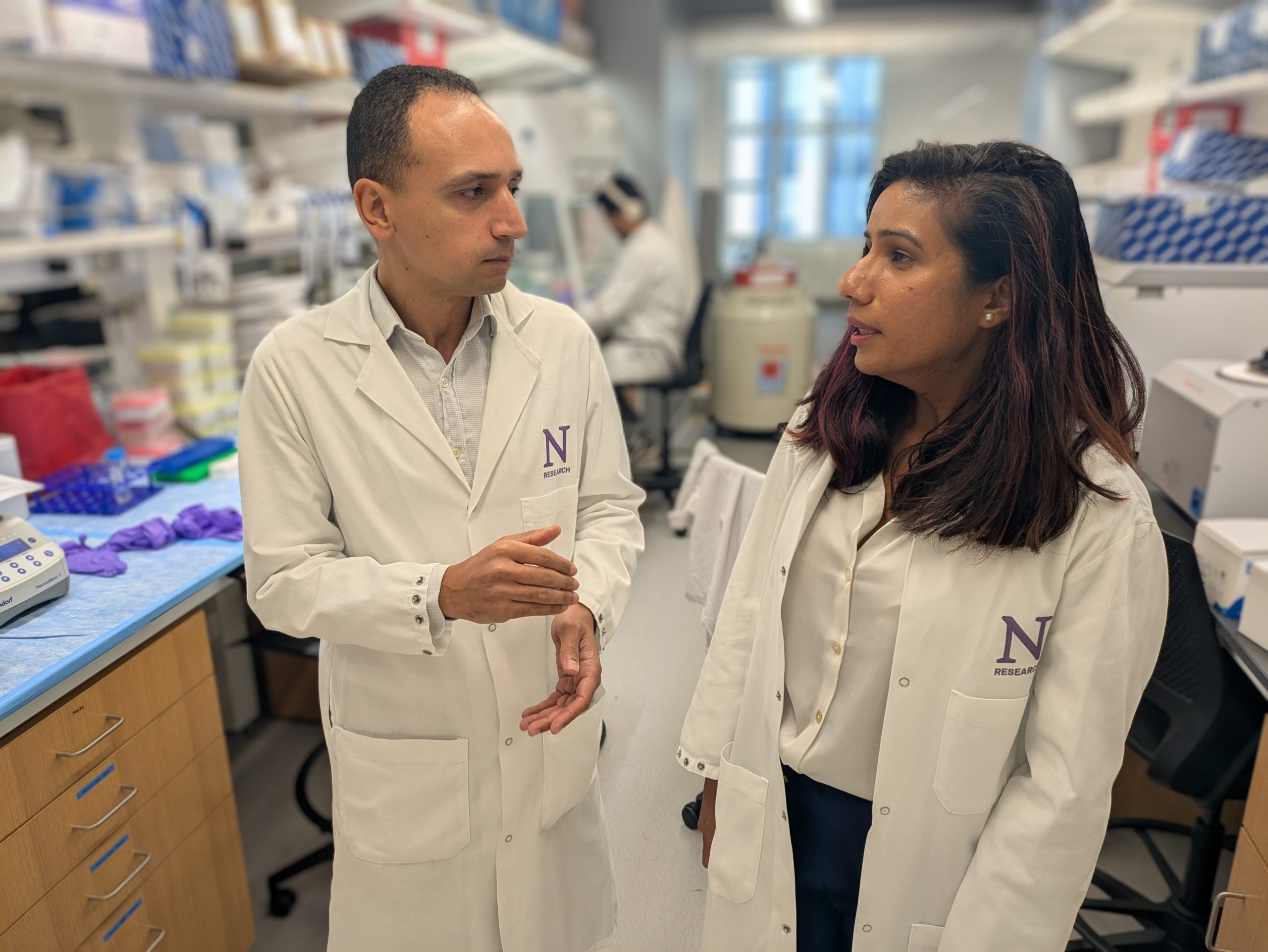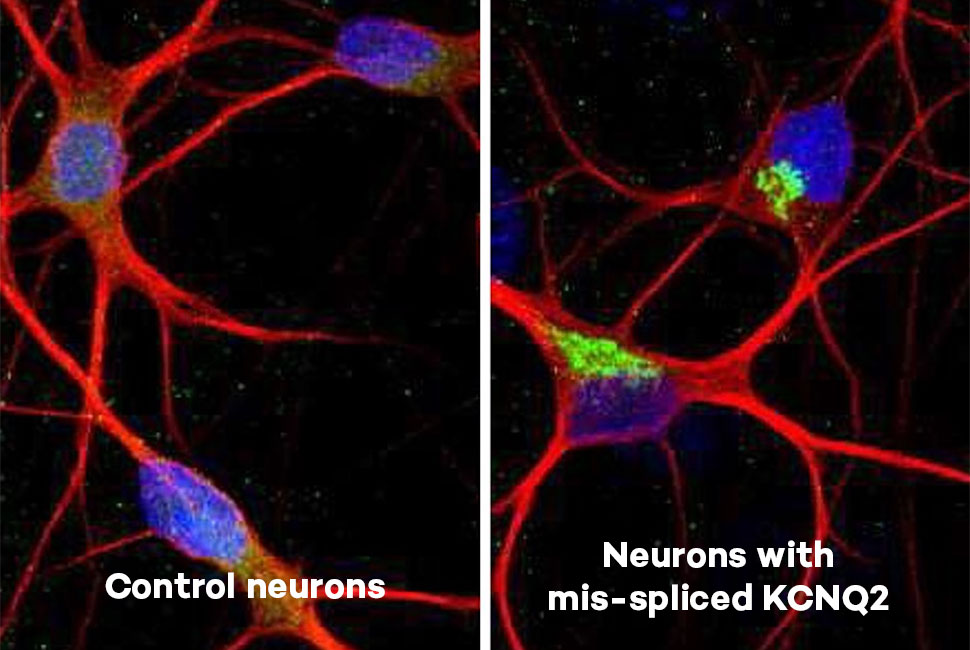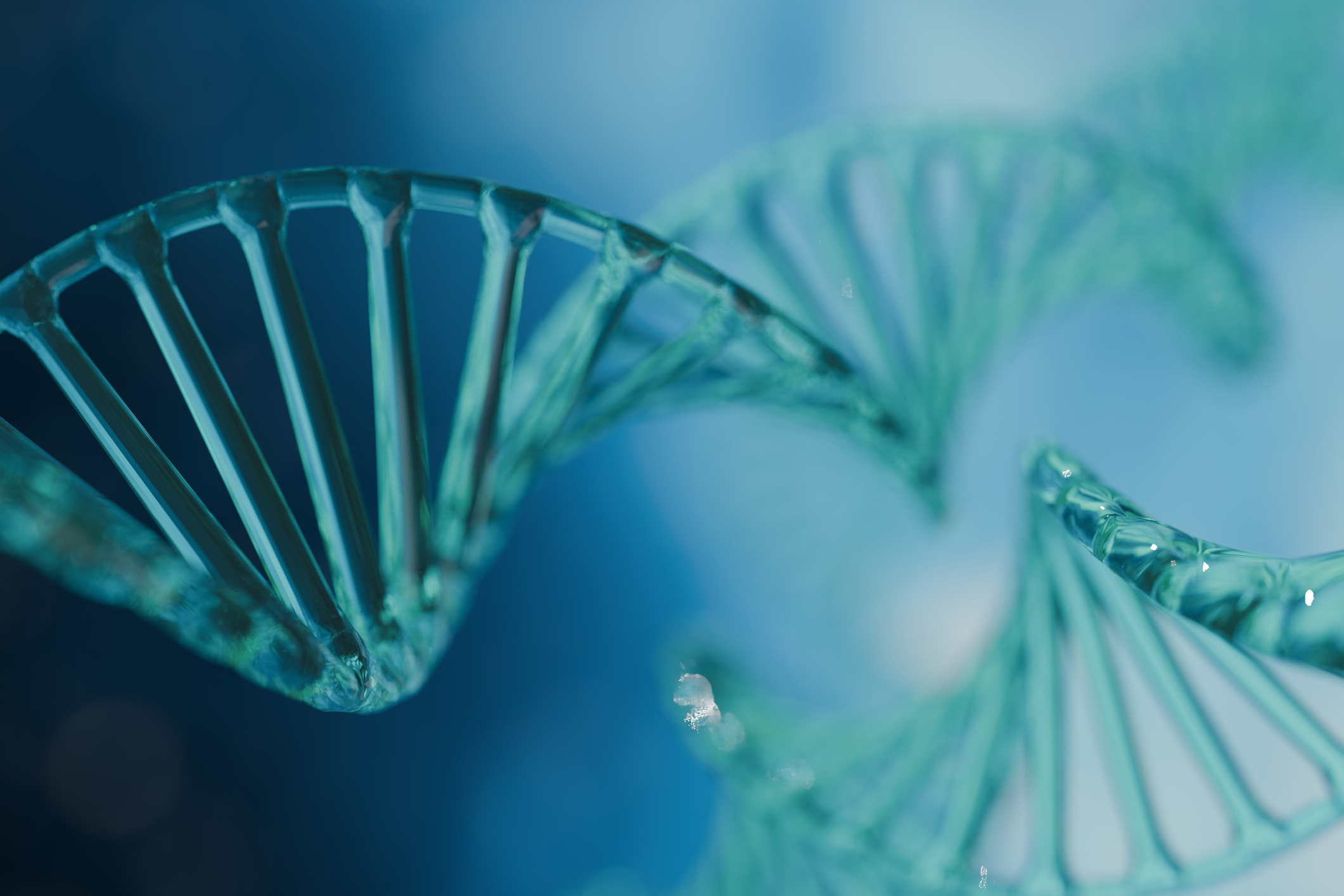
Northwestern investigators have demonstrated how manipulating DNA chemistry can alter its structure and flexibility and enable the realization of new materials useful in medicine and the life sciences, according to a study published in Science Advances and led by Chad Mirkin, PhD, professor of Medicine in the Division of Hematology and Oncology, the George B. Rathmann Professor of Chemistry at Northwestern’s Weinberg College of Arts and Sciences, and director of the International Institute for Nanotechnology.
“This study serves as a proof-of-principle to demonstrate how the researcher can strategically design and prepare DNA systems whose structures can be toggled to realize architectures with different shapes, flexibilities and reactivities” said Zhenyu (Henry) Han, a graduate student in the Mirkin laboratory and lead author of the study.
During biological processes such as DNA transcription, DNA can bend itself to form a circle through the process of DNA cyclization. This allows the DNA to interact with surrounding proteins in ways that linear, rod-like DNA strands do not.
In the current study, the investigators used chemical design to tailor the conditions that dictate DNA cyclization to better understand how natural processes occur and also to create new biomaterials composed of DNA and proteins with unusual forms.
“Instead of focusing on DNA’s genetic role as the blueprint of life, we are interested in exploring how DNA can be used as a programmable structural element that enables reversible bonding interactions between nanoscale materials, including those found in nature, like proteins,” Mirkin said.

First, the scientists in the Mirkin lab designed and prepared DNA strands – sequences of the DNA bases adenine, cytosine, guanine and thymine linked together. DNA hybridization occurs when two complementary single-stranded DNA molecules bond together to form a double-stranded molecule, or DNA helix – adenine bonds with thymine and cytosine bonds with guanine. The scientists inserted one or more unhybridized bases into the sequence, making the DNA strand more flexible to form a circular structure.
“We found that if we introduce regions with even one single unpaired DNA base, the DNA becomes more flexible and can form a circle shape,” Han said.
The scientists also found that by introducing DNA strands that bind with these initially unpaired regions, the DNA circles unraveled to favor long, linear, more rigid polymer chains. By removing these complementary strands, the scientists could easily revert the DNA in the system back to the cyclic structure.
Overall, the findings highlight the utility of DNA as a programmable building block for constructing dynamic polymer and nanoscale materials, such as fibers, gels and plastics, or colloidal crystals engineered with DNA, which have been pioneered by the Mirkin lab over the past three decades.
In addition, the findings highlight the breadth of ways DNA chemistry can be used to manipulating reactions between molecules in the lab and in biological systems, according to Mirkin.
“From a nanotechnology perspective, we can use DNA to synthesize unique and useful materials-by-design and program the organization of inorganic nanoparticles and other biomolecules such as proteins,” Mirkin said. “We are learning more about the world around us and using that knowledge to make biomaterials that will ultimately have a positive impact on people.”
Mirkin is a member of the Robert H. Lurie Comprehensive Cancer Center of Northwestern University and is also the recent recipient of the 2024 Kavli Prize in Nanoscience by The Norwegian Academy of Science and Letters.
This work was supported by the National Science Foundation awards DMR-2104353, ECCS-1542205, and 1121262, the Air Force Office of Scientific Research award FA9550-22-1-0300, and the Sherman Fairchild Foundation Inc.






